
Helpful tools for your practice and patients
Prescribing resources
Important information for prescribing and what patients need to know.
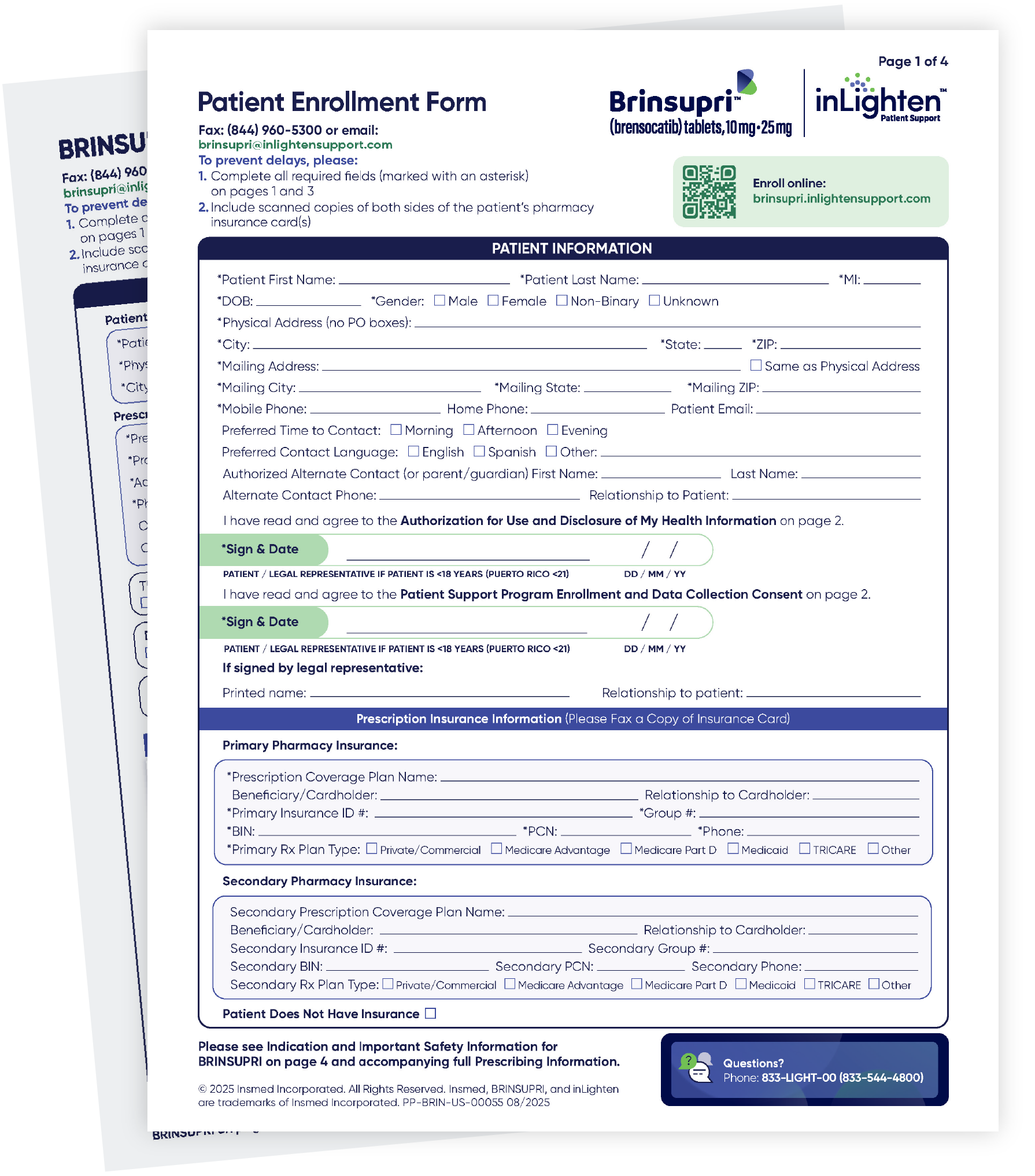
With this form, you can prescribe BRINSUPRI and help your patients enroll in the inLighten Patient Support program.
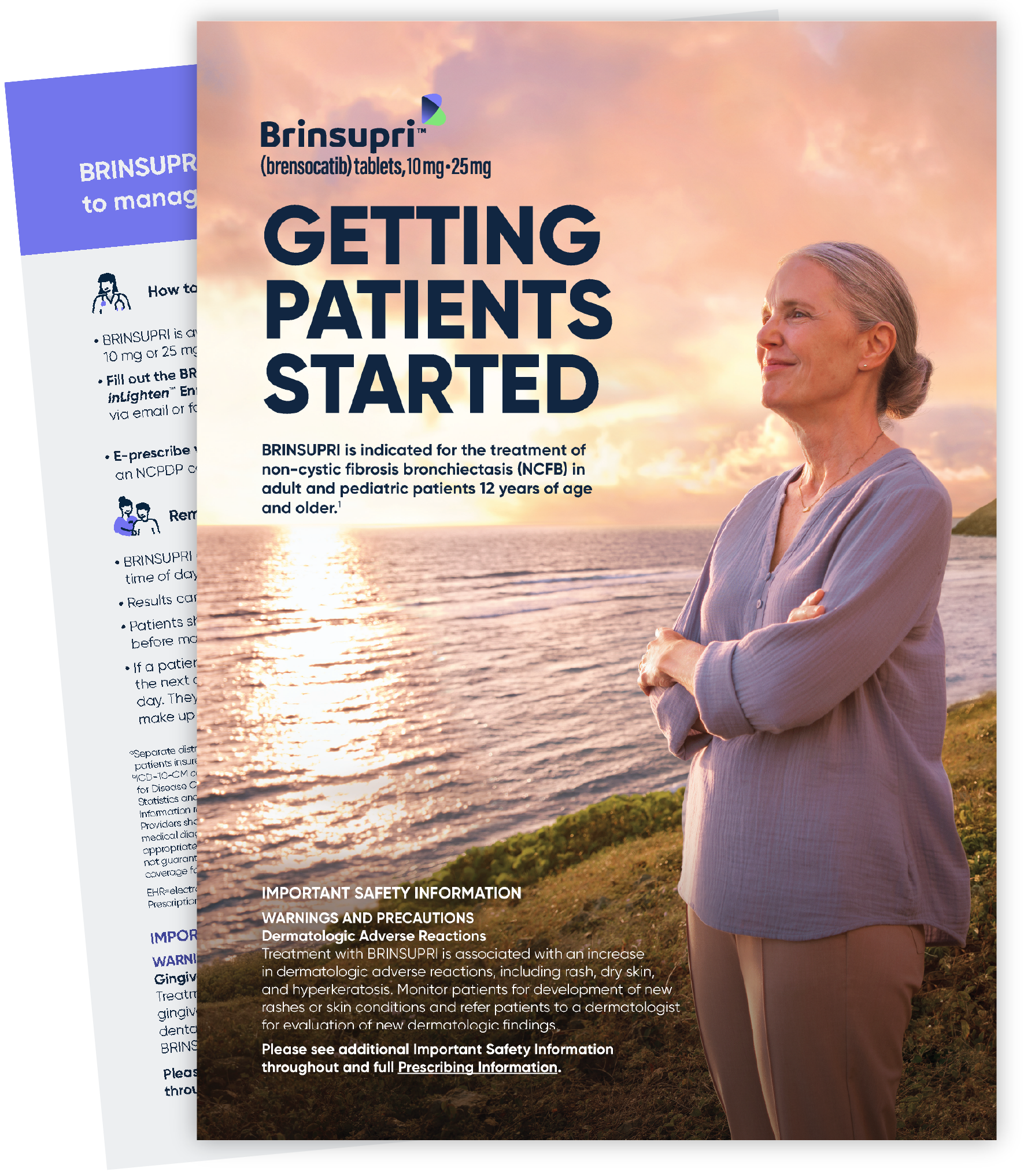
Specifically designed for office staff, this guide details how to get your patients started on BRINSUPRI.
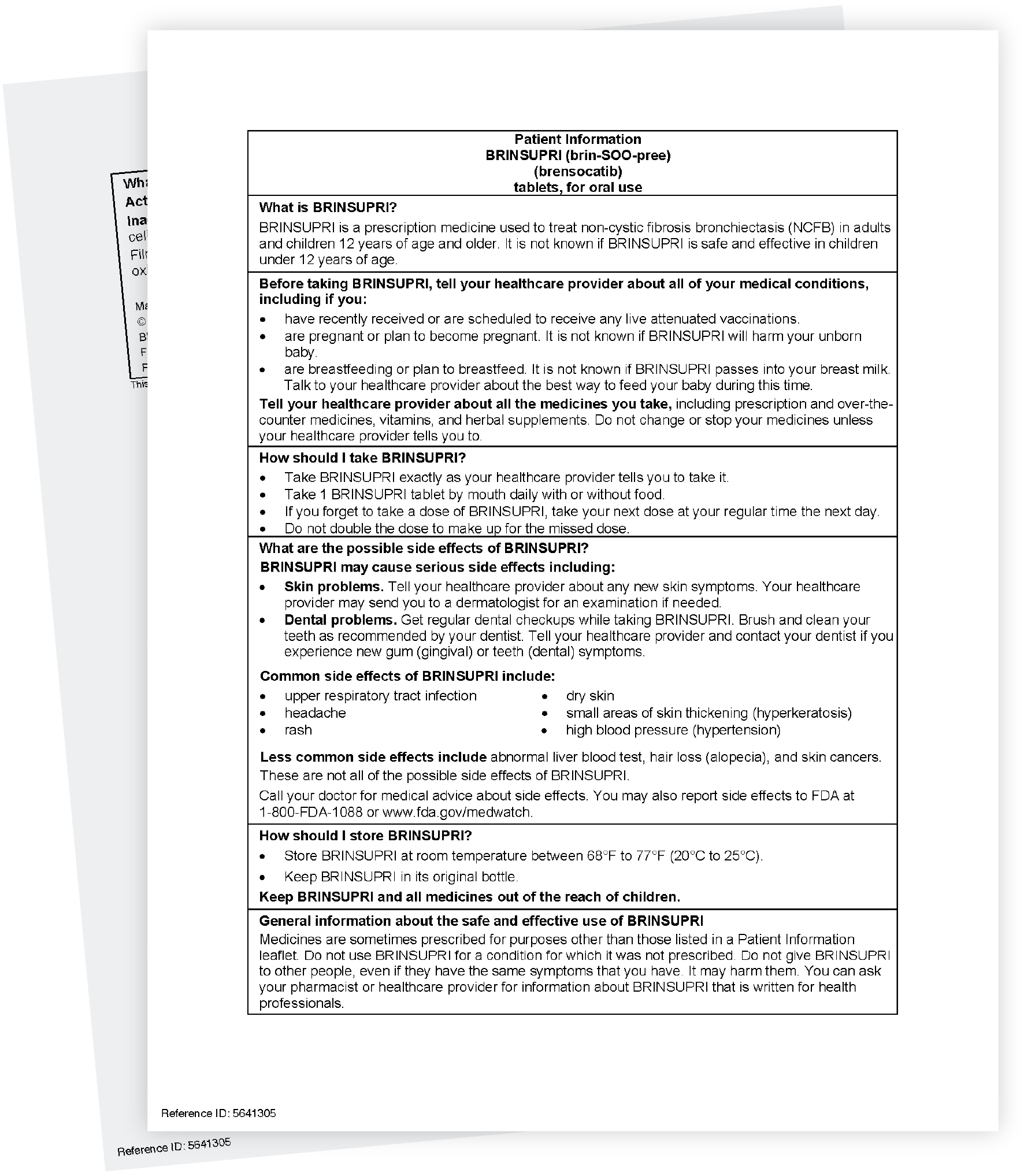
Important information about BRINSUPRI in patient-friendly language.

A summary of essential information on BRINSUPRI, including dosing, safety, and efficacy.
Access resources
Forms you may need to get your patients started with BRINSUPRI.

Sample letters of medical necessity/exception and appeal that can be modified based on a prescriber's medical judgment and discretion, including details related to the patient's medical history, diagnosis, and treatment plan. Insurance providers may have specific criteria, forms, or procedures that should be used for the prior authorization process.
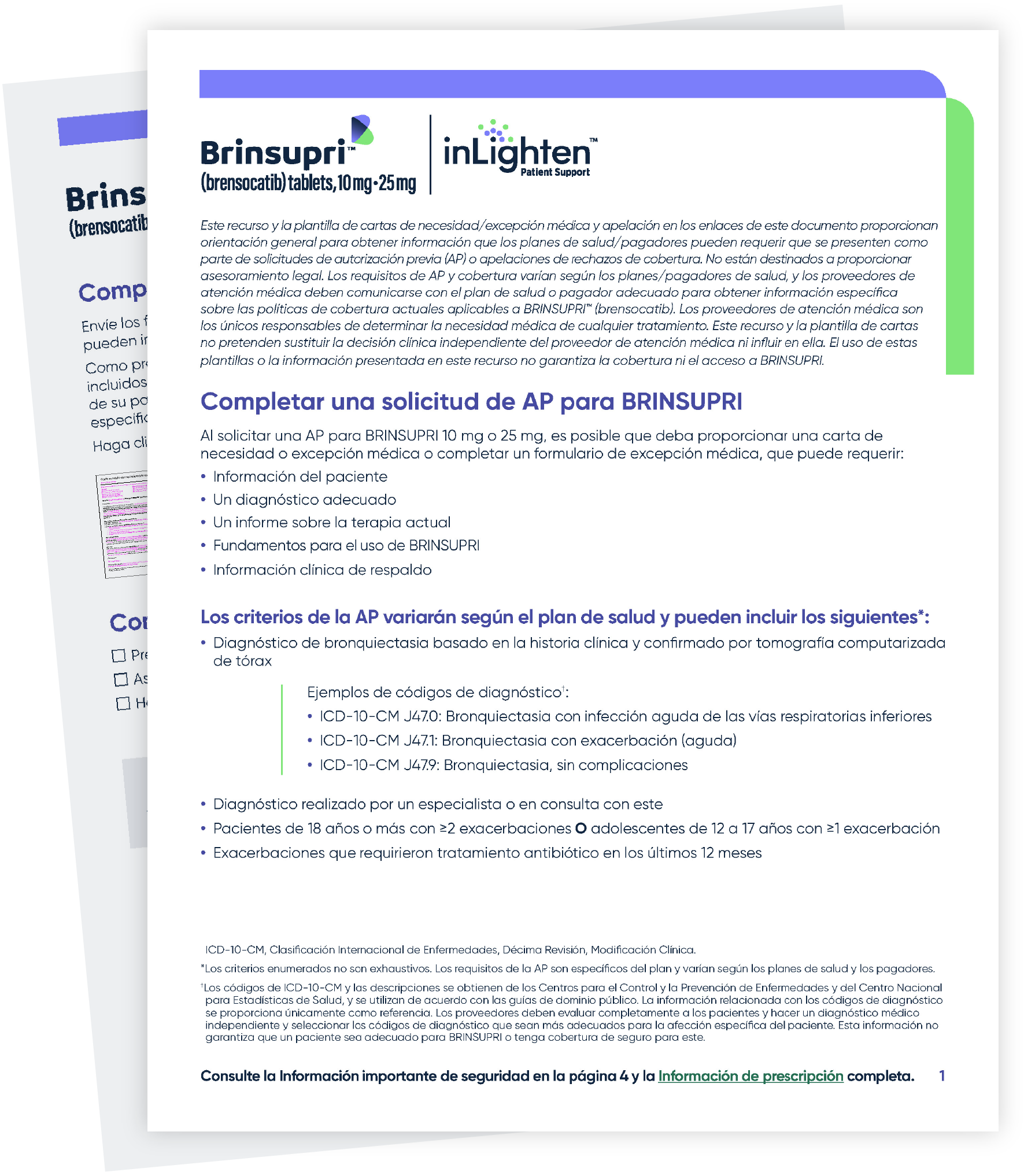
Cartas de muestra de necesidad/excepción médica y apelació que pueden modificarse según el criterio y juicio medico del prescriptor, incluyendo detalles relacionados con la historia médica del paciente, diagnóstico y plan de tratamiento. Los proveedores de seguros pueden tener criterios específicos, formularios o procedimientos que deben usarse para el proceso de autorizatión previa.
Patient resources
Helpful information to share with your patients.
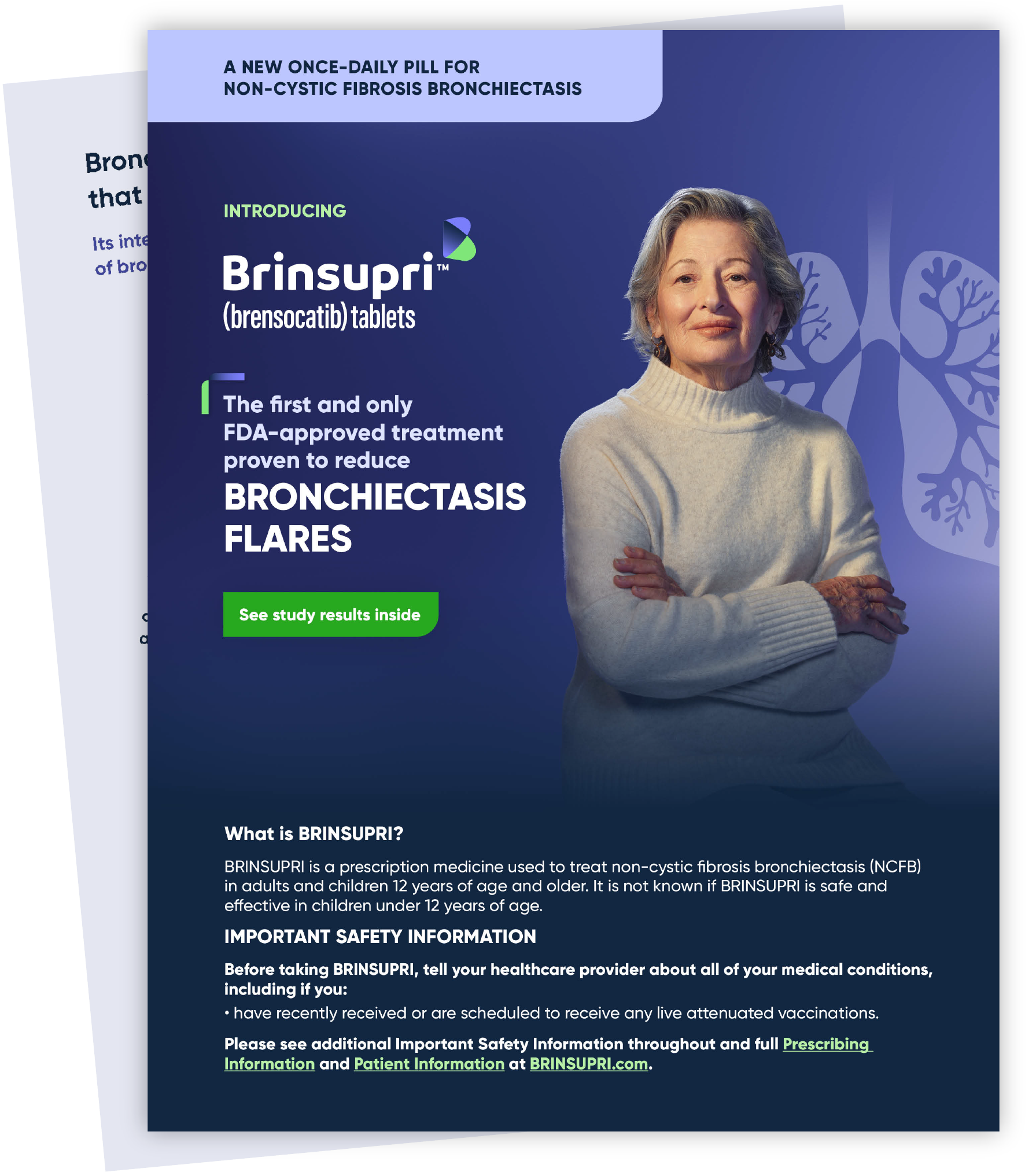
This resource helps patients learn more about BRINSUPRI, including how it works and what to expect as they start treatment.
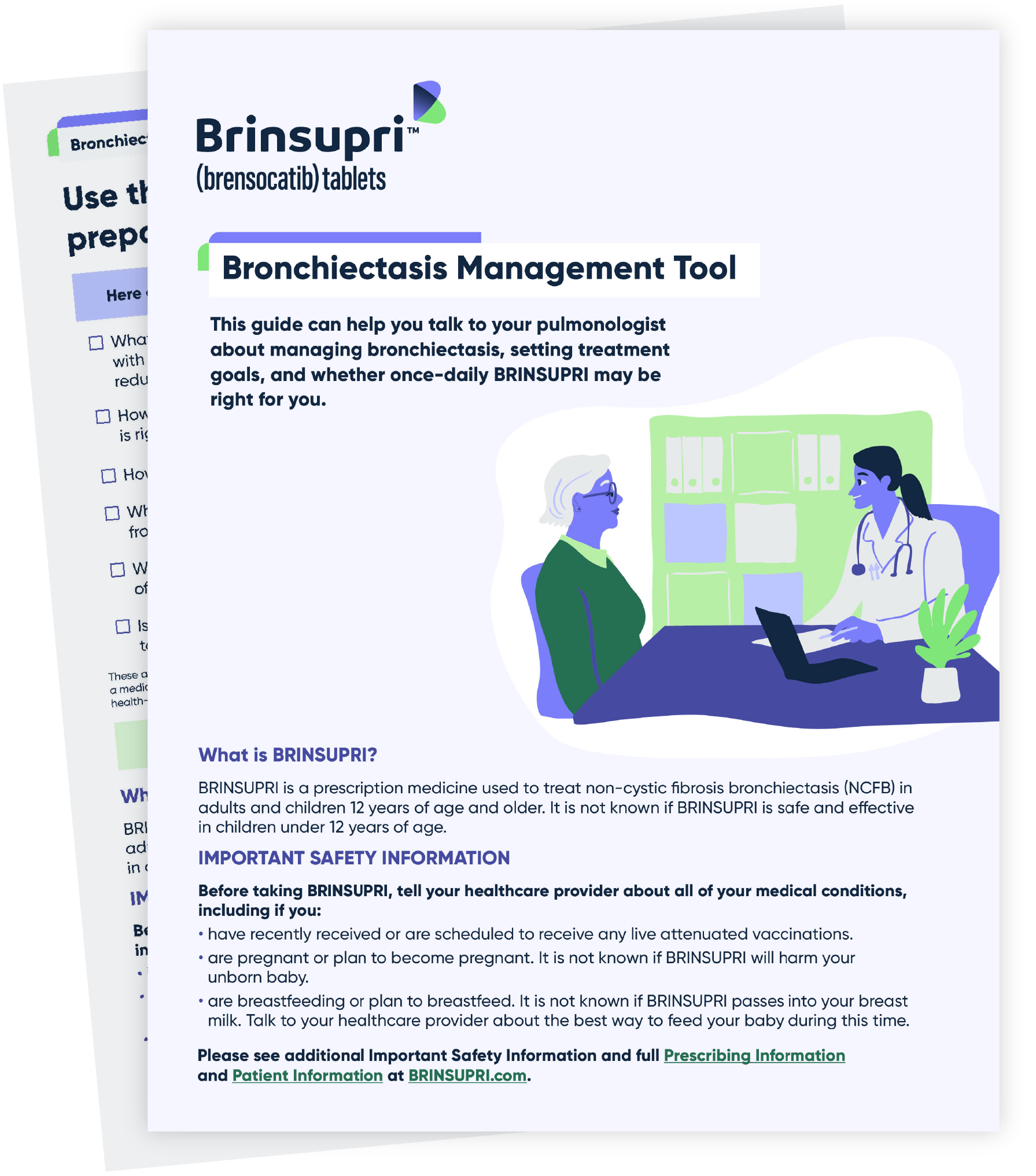
This tool helps patients start conversations with their pulmonologists about their bronchiectasis management plan and BRINSUPRI.
Video library
The mechanism of action of BRINSUPRI